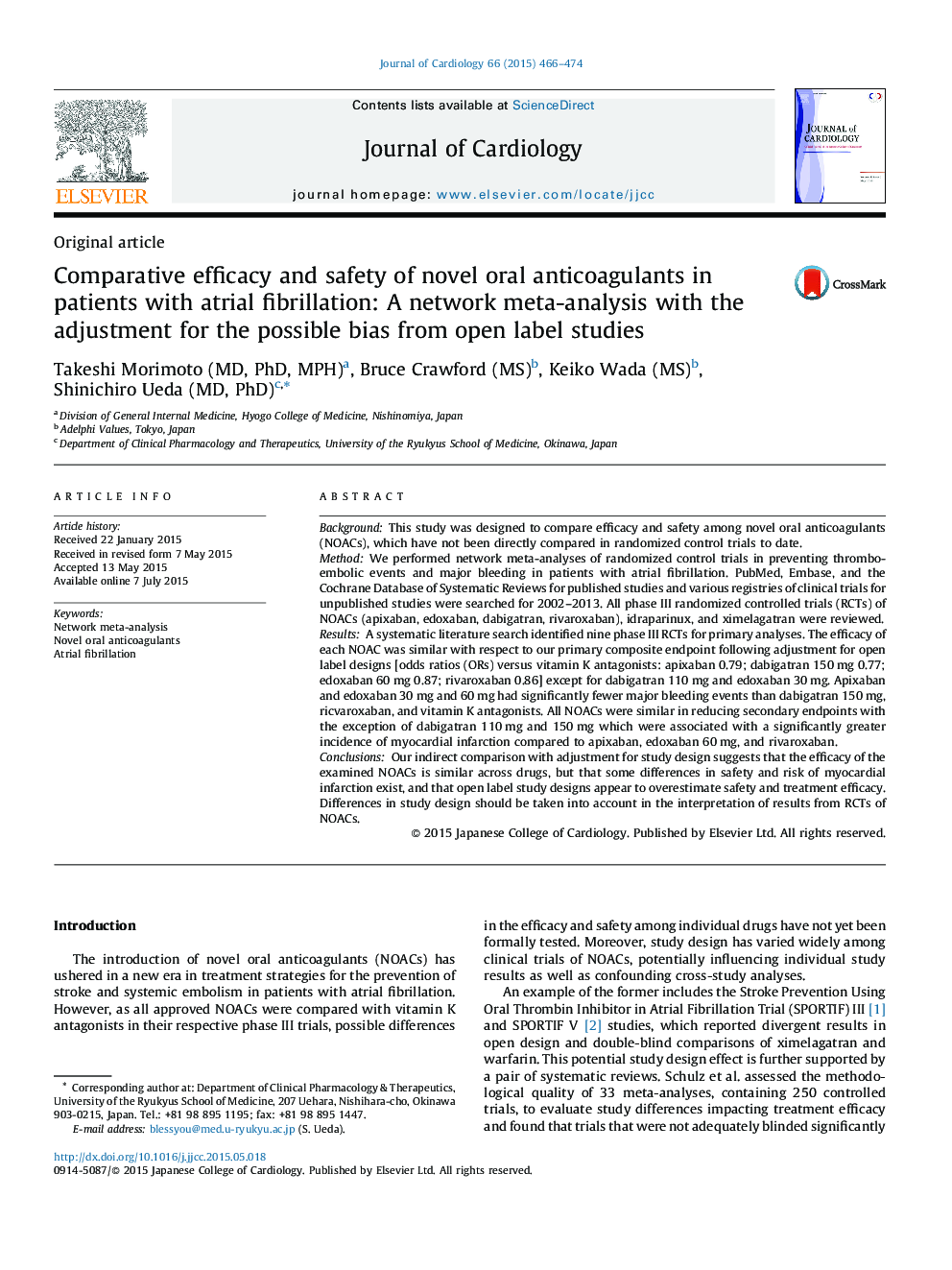| Article ID | Journal | Published Year | Pages | File Type |
|---|---|---|---|---|
| 2962987 | Journal of Cardiology | 2015 | 9 Pages |
BackgroundThis study was designed to compare efficacy and safety among novel oral anticoagulants (NOACs), which have not been directly compared in randomized control trials to date.MethodWe performed network meta-analyses of randomized control trials in preventing thromboembolic events and major bleeding in patients with atrial fibrillation. PubMed, Embase, and the Cochrane Database of Systematic Reviews for published studies and various registries of clinical trials for unpublished studies were searched for 2002–2013. All phase III randomized controlled trials (RCTs) of NOACs (apixaban, edoxaban, dabigatran, rivaroxaban), idraparinux, and ximelagatran were reviewed.ResultsA systematic literature search identified nine phase III RCTs for primary analyses. The efficacy of each NOAC was similar with respect to our primary composite endpoint following adjustment for open label designs [odds ratios (ORs) versus vitamin K antagonists: apixaban 0.79; dabigatran 150 mg 0.77; edoxaban 60 mg 0.87; rivaroxaban 0.86] except for dabigatran 110 mg and edoxaban 30 mg. Apixaban and edoxaban 30 mg and 60 mg had significantly fewer major bleeding events than dabigatran 150 mg, ricvaroxaban, and vitamin K antagonists. All NOACs were similar in reducing secondary endpoints with the exception of dabigatran 110 mg and 150 mg which were associated with a significantly greater incidence of myocardial infarction compared to apixaban, edoxaban 60 mg, and rivaroxaban.ConclusionsOur indirect comparison with adjustment for study design suggests that the efficacy of the examined NOACs is similar across drugs, but that some differences in safety and risk of myocardial infarction exist, and that open label study designs appear to overestimate safety and treatment efficacy. Differences in study design should be taken into account in the interpretation of results from RCTs of NOACs.
